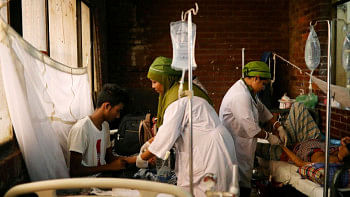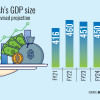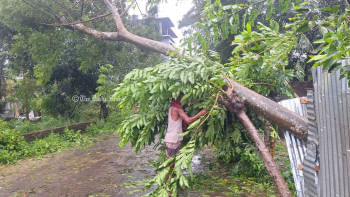How agro-processing can secure Bangladesh’s export resilience

With Bangladesh's readymade garment (RMG) sector facing growing threats in the form of uncertain global demand, protectionist US tariffs and other issues, the nation focuses on agro-processing as a potential export alternative. As over 40 percent of jobs and 11.02 percent of gross domestic product (GDP) come from agriculture, analysts argue that agro-processing can build upon Bangladesh's agrarian strength, involving less investment outlay and reducing post-harvest losses by improving the shelf life. The switch holds the possibility of diversifying exports, reducing economic vulnerability, and reaching a growing global processed food market that is set to grow to $4.1 trillion by 2027.
Bangladesh's $36 billion RMG industry (Bangladesh Bank data for FY 2023-24), providing the major chunk of export revenues, faces historic hurdles. Its biggest market, the US, which imported $7.34 billion worth of garments in 2024, has imposed additional tariffs on Bangladeshis, as it did to many other countries of the world. This move is expected to negatively impact Bangladesh's RMG exports. Meanwhile, increasing production costs and competition from countries such as Ethiopia, producing low-cost basic garments, are denting Bangladesh's cost leadership. The World Bank warns that over-reliance on RMG exposes the economy to external shocks and demands diversification.
Agro-processing or value addition of raw crops to products like juices, dried fruit, and snacks suits the agrarian economy of Bangladesh, where less initial investment is needed. Agro-processing, unlike RMG, which involves expensive machinery and foreign inputs, utilises existing crops, thus reducing the cost of inputs. For instance, it costs $50,000-100,000 to establish a small-scale fruit processing plant compared to $2-5 million for a medium-scale apparel factory. It also involves less complex technology that suits local entrepreneurs in rural settings.
Bangladesh produces over 40 million metric tonnes of vegetables and fruit every year, yet 30 percent of it gets lost after harvesting due to inadequate processing and storage, as per FAO 2021 statistics. Excessive or perishable fruits may be converted by agro-processing to shelf-stable products that reduce wastage and increase farm income.
Bangladesh's agro-processed exports—$1.2 billion in 2022–23—are already rising. Value-added foods like frozen fish, spices, and potato flakes are exported to 52 nations, including the Middle East, the EU, and Japan. Over 4,500 Bangladeshi products, including processed ones, enjoy duty-free market access in the EU under the Generalised System of Preferences. In 2022, the Middle East imported $2.5 billion worth of processed foods, highlighting significant opportunities for suppliers of halal-certified products.
National Agricultural Policy 2018 prioritised agro-processing by providing tax incentives, low-cost credit, and export incentives. It also aims to increase agro-processing's GDP share to five percent from two percent by 2025. The Export Promotion Bureau 2023 allocated $15 million for establishing 50 village processing clusters equipped with packaging and cold storage facilities.
However, challenges remain. Only 12 percent of agro-processors are certified to meet international safety standards like International Organization for Standardization (ISO) or Hazard Analysis and Critical Control Points (HACCP), which limits access to high-value markets. A 2023 World Bank report cites a lack of cold chain infrastructure, with only 15 percent of perishables being transported under refrigeration. Finance remains an issue for Small and Medium-sized Enterprises (SMEs), with banks extending less than five percent of agriculture loans.
Upgrading of technologies, enhancing workers' skills, and streamlining export certification would make Bangladesh globally competitive. Technical skills may be acquired by cooperating with corporations and public-private partnerships would amplify processing zones. Whereas RMG endured turbulence, agro-processing is a low-risk, viable export driver. Value addition to agrarian products can keep Bangladesh's wastage to a bare minimum, empower the locals and earn a spot in the value chain of the world. Through consistent policies and strategic investment, the industry can follow RMG's success template and ensure economic prosperity for future generations.
K.M. Arshad is an undergraduate student of Department of Economics at University of Dhaka.
Views expressed in this article are the author's own.
Follow The Daily Star Opinion on Facebook for the latest opinions, commentaries, and analyses by experts and professionals. To contribute your article or letter to The Daily Star Opinion, see our submission guidelines.

 For all latest news, follow The Daily Star's Google News channel.
For all latest news, follow The Daily Star's Google News channel. 










Comments